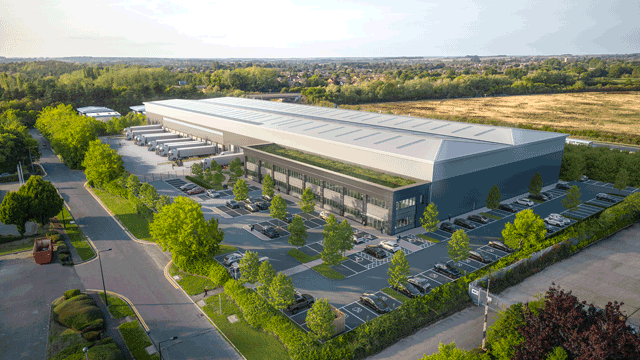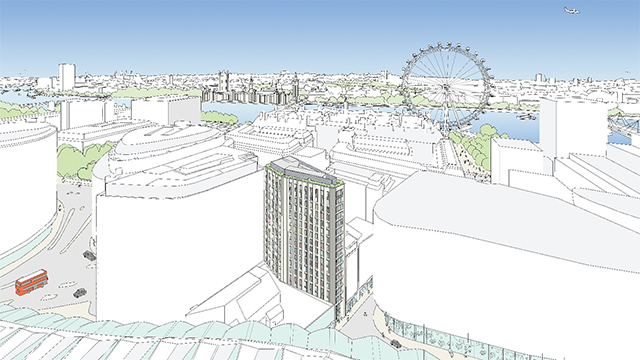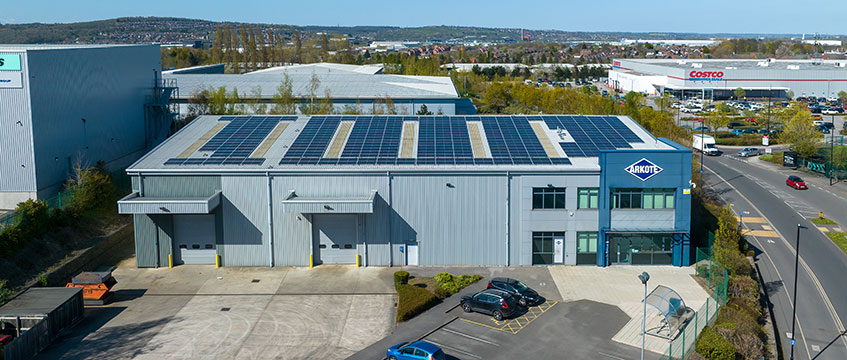Rising demand and rental levels for open storage – land to let or storage yards – mean it is likely to evolve as a new asset class within the industrial sector, according to new research.
Findings from Carter Jonas, shared exclusively with EG, show that enquiries totalled 494 acres of open storage sites during the first half of 2021, compared with 537 acres for the entirety of 2020. Demand for open storage this year is therefore expected to almost double on the previous year. Enquiry levels rose by 73% year-on-year in 2020.
Andrew Smith, commercial partner at Carter Jonas, said open storage has a reputation for low-value sites, comprising mostly hardcore and broken asphalt surfaces and rented on short-term leases to poor covenants. However, those assets are now seeing “strong rental growth” in several markets, as well as demand from “high-quality” occupiers including Royal Mail, Amazon and DPD.
A predicted rise in electric vehicles used for last-mile delivery within the next decade is also set to create additional demand for storage yards, especially as electric fleets will require more charging ports.
Grubby but growing
Smith, whose team has devised a classification index for different open storage types to help define values, said: “It’s not a glamorous part of the industry, but neither was industrial when I started my industrial career 25 years ago. It is seen as a grubby part of the industry, associated with metal recyclers and things you might not want in your backyard, but now it is developed.
“The likes of Amazon will take a massive shed, but will never have enough parking to go with it. Open storage is no longer just an ancillary use – it is becoming just as important as the main warehouse operation itself.”
He adds that there are AAA covenants as demand soars for sites for 24/7 use with good surfaces. “The spec is starting to mature as well,” said Smith.
London and the inner South East are the strongest markets, accounting for around 30% of national demand.
The findings point to a sharp rise in rents over the past five years, particularly in those regions, where average rents have grown by 83%. This compares with a near-25% rise in prime rents for a 10,000 sq ft industrial property during the same time frame.
Heathrow was the most expensive location for open storage, at £7.50 per sq ft, followed by Park Royal at £5.50 per sq ft and Slough at £4.50 per sq ft.
The report highlighted “significant” potential for growth in regional markets, where rents are averaging between £1 and £1.50 per sq ft.
Notable deals last year included the 121-acre British Car Auctions site in Corby, which was sold to DTZ Investors for £67.7m in December, reflecting a 4.8% yield.
Bigger sites in demand
The average size requirement for open storage sites has increased to 4.2 acres in 2021, up from 3.3 acres in 2019.
Just over a fifth of enquiries had a maximum size of less than 1.5 acres for “ultra-urban” sites, while 16% were for “standard urban” sites measuring 1.5-2.9 acres. Nearly half of the enquiries had a maximum size classed as “large urban”, measuring 3-6.9 acres. Almost a fifth of enquiries had a maximum size of more than 7 acres in “non-urban” areas.
Half of all enquiries during H1 2021 were for leasehold-only sites, with a further 38% prepared to consider either leasehold or freehold properties. Only 12% of enquiries were solely for freeholds.
In the meantime, supply remains restricted across all types of open storage sites. With these dynamics in play, the signs point to open storage evolving as an industrial sub-sector.
For Smith, it is “only a matter of time” before dedicated open storage property companies will emerge to deliver product on a “more ubiquitous” basis.
“We believe open storage should not simply be viewed as low-value land use, or a transient use pending development, but one that has considerable potential as an asset class in its own right,” said Smith.
“The sector has several highly attractive characteristics at a time when prime investment product is scarce and many other mainstream sectors are seeing falling values or uncertain occupier demand, or are relatively fully priced, fuelling the desire of many investors for diversification.”
To send feedback, e-mail pui-guan.man@eg.co.uk or tweet @PuiGuanM or @EGPropertyNews











